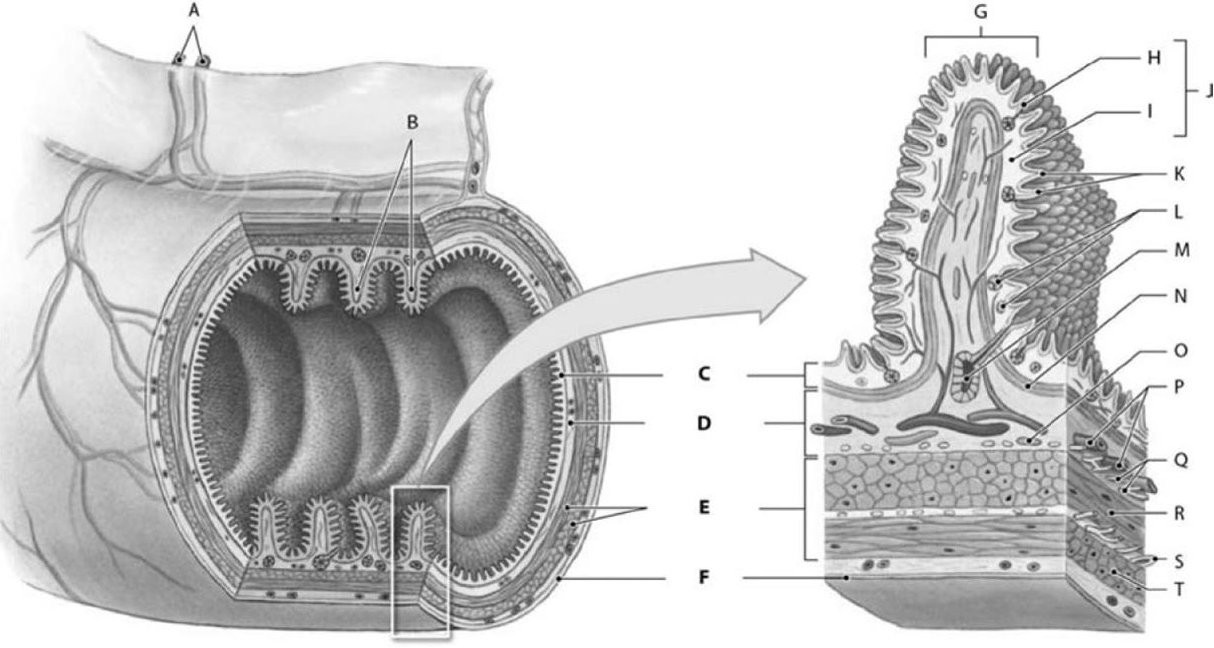What is the definition of total lung capacity?
A. The maximum amount of air that can be inspired after the expiration of a normal breath at rest
B. The maximum amount of air that can be moved
C. The amount of air remaining in the lungs after the expiration of a normal breath at rest
D. The maximum amount of air the lung can hold
Answer: D
You might also like to view...
Label D represents which structure?

A) circular fold
B) submucosa
C) muscularis externa
D) serosa
E) mucosa
What category of controls (local or extrinsic) is primarily responsible for matching tissue blood flow with the metabolic needs of the specific tissue involved? ____________________
Fill in the blank(s) with correct word
FAD and NAD are coenzymes that act as ________ in biochemical reactions.
A. vitamin carriers B. energy carriers C. oxygen carriers D. hydrogen carriers
Which structures form the secondary brain vesicles?
A) metencephalon and myelencephalon B) diencephalon and triencephalon C) diencephalon and telencephalon D) diencephalon and prosencephalon E) prosencephalon and rhombencephalon